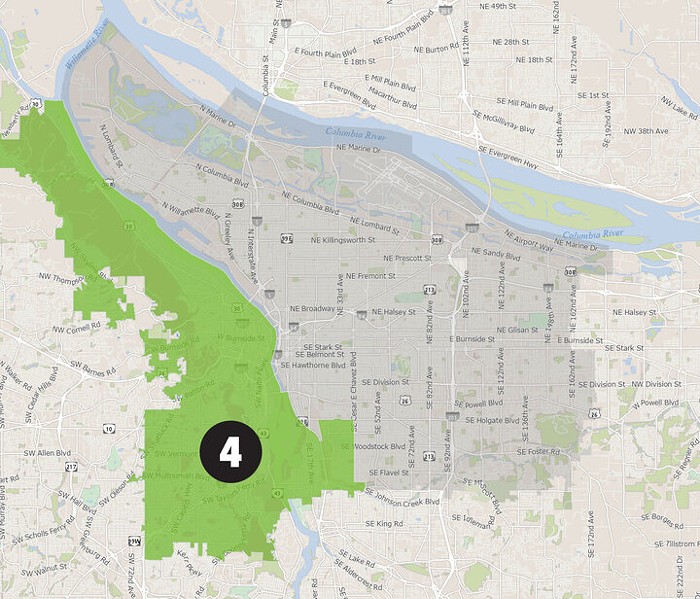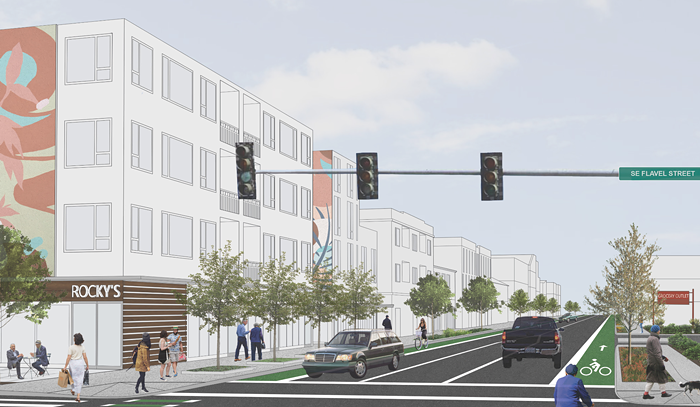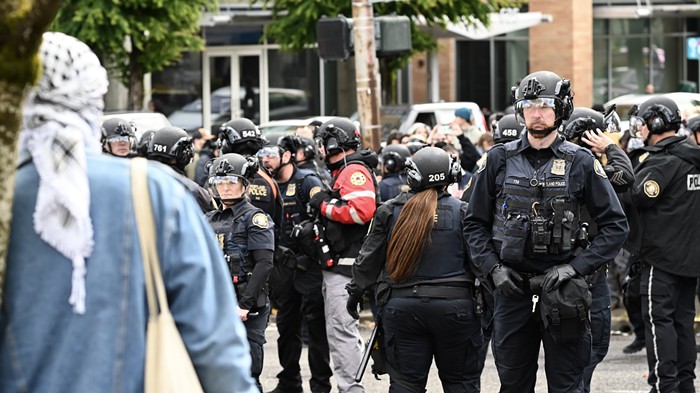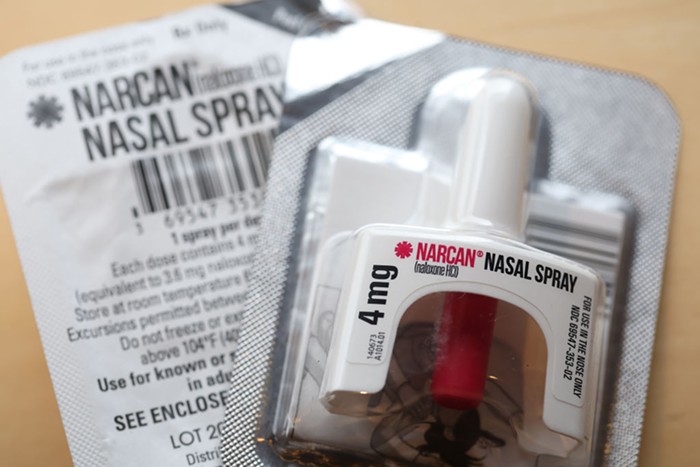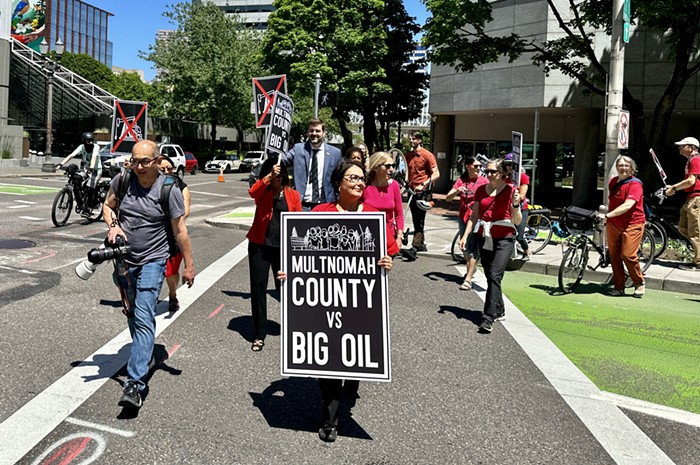
Although third-generation Black Portlander Kamelah Adams grew up off N Williams Ave., in the historic Albina Neighborhood, she spent much of her childhood visiting relatives in Northeast Portland’s Alberta Neighborhood.
Like Albina, the Alberta Neighborhood is historically Black—a product of racist city zoning rules in the early 1900s that pushed most Black families and businesses into North and Northeast Portland. In the mid-twentieth century, the neighborhood’s main arterial—NE Alberta St.—was a thriving hub for Black business and culture in the city.
But continual economic disinvestment and racist urban renewal projects took their toll in the following decades. By the 1980s, a City of Portland report noted that NE Alberta St. was defined by its “derelict houses, neglected yards, abandoned cars, and turned-over shopping carts.”
As a child, those macro issues were not on Adams’ mind. She recalls feeling safe and at home in the neighborhood in the 1990s, often walking with her relatives to buy snacks at a convenience store on 24th and NE Alberta St. owned by a Black woman who lived nearby.
But as Adams grew older, the neighborhood’s makeup began to change. The city’s renewed investment in the “blighted” area began attracting more white, higher-income residents and businesses that catered to them. Rents increased, pushing longtime residents out of the neighborhood and shuttering Black-owned businesses. By 2008, Adams felt like an outsider on the streets she called home.
“I didn’t feel welcome on Alberta Street when gentrification first started happening,” she said. “I remember people gawking at us as if we didn’t belong there, and it’s like... this is the neighborhood I grew up in and am familiar with. My family still lives in this area.”
But now, after a year of historic racial justice protests and economic upheaval, the Alberta Neighborhood may be due for another change.
Adams now runs Mimi’s Fresh Tees, a social justice-oriented apparel company. In January, Adams strung up a large “Love Over Hate” sign in a NE Alberta St. storefront window, which directed people to her company’s website. While she hung up the sign, passersby honked and cheered in support.
“I felt the love and I felt welcome,” she said. “It was a really great feeling.”
Adams’ story is indicative of an ambitious push by community members and leaders on NE Alberta to bring Black residents and businesses back to the street, and, in the process, halt or even reverse the processes of gentrification that have transformed the neighborhood.
“People often say ‘displacement and gentrification’ like it’s a done deal, a death sentence,” wrote Lizzy Caston, interim director of business advocacy nonprofit Alberta Main Street, who is white, in an email to the Portland Mercury. “But it doesn’t have to be. A lot of the mechanisms of displacement and gentrification can be reversed, at least somewhat[,] with careful community based planning and investment.”
The effort to transform Alberta began in earnest several years ago, when Cleo Davis and Kayin Talton Davis, the partnership behind the Black Williams Project on N Williams Ave., connected with eight local storytellers to create a series of historical markers on the street.
The five markers, which run along NE Alberta St. between 11th to 24th avenues, tell the stories about the historic Black Portland neighborhood that are political and cultural.

One marker details Portland Public Schools’ one-way busing program that launched as an effort to desegregate schools in the mid-1960s. Another celebrates the Cotton Club, the legendary music venue that stood on N Vancouver Ave. that hosted artists like Etta James and Sammy Davis Jr. before the expansion of Interstate 5 forced it to close in the ‘70s.
That marker features an image of a smiling, young Paul Knauls, the club’s proprietor, who ran a series of successful businesses in the area after the club closed and, at 90 years old, still reigns as the unofficial mayor of Northeast Portland.
The marker at 11th and NE Alberta St. features an anonymous quote from a resident that reads: “What I remember is the feeling of thinking that I have power in this neighborhood.”
The historical markers were not universally well-received. Adams said that she and her friends had a conversation shortly after they were unveiled about how Portland “cannot continue to replace Black people with historical pieces.” But they were a start of a process of re-entry.
Quincy Brown, a third-generation Black Portlander who runs the community development firm We All Rise and counts Knauls as a mentor, said that the historical markers serve as both a reminder of the stakes of preserving the Alberta Neighborhood as a statement of intent.
“The historical marker project was the first moment of reclaiming and re-entry,” he said.
“What we see is that one of the most damaging psychological things that gentrification does in Portland... is the erasure of history and culture,” said Cornelius Swart, who directed the documentary Priced Out about gentrification in Northeast Portland.
“People don’t even know that there was a Black community here to begin with anymore,” he continued. “I feel the intent of this putting a flag culturally back in this neighborhood is a super good intent.”
But plenty of Black people still live in Northeast Portland—even if its main shopping streets are no longer catering to them.
“I think there’s this misperception in displacement that [gentrification] is purely economic,” Brown said. “I would say that that’s definitely part of the problem, but another aspect of the problem is if the bar that you go to every day closes, or the place you take your kids to get babysat, if that place moves, [you might think], ‘Is this my neighborhood anymore?’”
Anthony Deloney, a Black Portlander who serves as Director of Strategic Initiatives for Self Enhancement, Inc., the city’s largest Black-run social service nonprofit, said it was a trip to New Seasons for lunch in 2017 that cemented for him the degree to which the gentrification of public space had taken hold.
“I remember not seeing a single Black face,” Deloney said. “Not a single one. I remember the eyes on me. It was that look. It was that subtle, ‘What are you doing here?’ kind of thing. I was like ‘Oh my God.’ This would never have happened in this community ten, fifteen years ago.”
The goal on NE Alberta St. is to make the street and the surrounding area accessible and welcoming again for front-facing Black businesses and cultural events. Do that, Brown says, and people will start coming back in droves.
“Once you get Black businesses back in the street, then Black people are forced to go back down to Alberta to get their hair products, the things that they need,” Brown said. “Then Black people say, 'Wait, why am I living in Beaverton? I should buy a house on Alberta.'”
"People often say ‘displacement and gentrification’ like it’s a done deal, a death sentence. But it doesn’t have to be.”
There is no question that cost remains prohibitive for many people who would like to move back into the area, and that a number of Black Portlanders have found financial success and community in other parts of the city. But there is still strong interest in reclaiming Northeast Portland as a Black communal center.
Caston said that she receives four or five inquiries each month from Black business owners who are interested in setting up brick-and-mortar operations on the street. Black community-focused programming on the street in the last year, like a Junteenth celebration, has garnered high turnout.
Caston has worked with Brown and others to help facilitate the revitalization efforts — a new approach for the Main Street America program she leads.
When it was founded in 2010 to help spur commercial development on the street, Alberta Main Street’s initial long-term vision for the street did not include anything about the neighborhood’s Black community, gentrification, or equity.
Initially, whether intentionally or not, the group served to speed along the processes of gentrification. Research at the University of Oregon three years ago found that Alberta Main Street “created a more financially prosperous, vibrant neighborhood but is not equitably distributing resources.”
But the group’s focus has shifted dramatically in the last year — first with the onset of the COVID-19 pandemic, and then with the uprising against racial violence that swept through the city following the killing of George Floyd in Minneapolis.
The onset of the pandemic led the Portland Bureau of Transportation (PBOT) to temporarily allow restaurants to set up additional outdoor seating and street closures for pedestrians. That opened up possibilities to democratize and expand the street’s use of public space.
Eighty percent of the artists that Alberta Main Street hired last year were Black. The program also sponsored pop-up markets for Black, Indigenous, and People of Color (BIPOC) vendors over the summer, and has given over its own storefront for the last eight months to organizations supporting the city’s Black community—from the Black Resilience Fund to Mimi’s Fresh Tees.
Several of those vendors who now have a relationship with the street and its business community, including Adams, have expressed interest in moving in permanently.

In addition to the commercial efforts, a number of organizations are working on creating affordable and accessible housing for the neighborhood’s former residents.
Various developers are planning to build some 165 units of affordable housing on or near NE Alberta St., with more than 60 units being co-developed and run by Self Enhancement, Inc. and the affordable housing organization Community Development Partners.
“At some point, you can either sit from your window and point about what’s going on, or you can get involved and try to do your piece,” said Deloney of Self Enhancement, Inc.’s involvement.
Art and public history continue to play a role in the re-entry effort as well. In 2019, a street artist named Campo noticed that people were consistently tagging the building on the corner of NE Alberta St. and 17th Ave. with graffiti. Campo reached out to the business that owns the building, Courtesy Janitorial Services, the city’s oldest Black-owned business, and asked if he could paint a mural on the outer wall instead.
The owners were enthusiastic about the idea, and suggested that the mural included the original owner of the business: Floyd Booker Sr., a stalwart of the neighborhood’s Black community who arrived in the Northwest in 1943 and opened the business in 1956.
Campo’s mural depicts Booker in a hat and suit, and also shows him leaning against a car with three other men in a reproduction of a photograph taken in Vanport, a town once located in North Portland.
After seeing the finished product, Alberta Main Street asked him to do another mural on the side of the recently-closed Solae’s Lounge, celebrating the legacy of the former jazz club.
Of course, the forces of gentrification are powerful. But they are not inevitable—not in Portland, and not anywhere else.
Brown pointed to districts in Oakland and Atlanta that have made significant strides in re-entering communities displaced by gentrification. Deloney, too, sees a path forward more equitable than the one Portland has charted over the last quarter-century.
“Although it won’t be what it was, there is no way that we should be a footnote in North and Northeast Portland,” Deloney said. “When there are families who want to maintain, they should be honored. When there are people who want to come back, they should be honored.”




